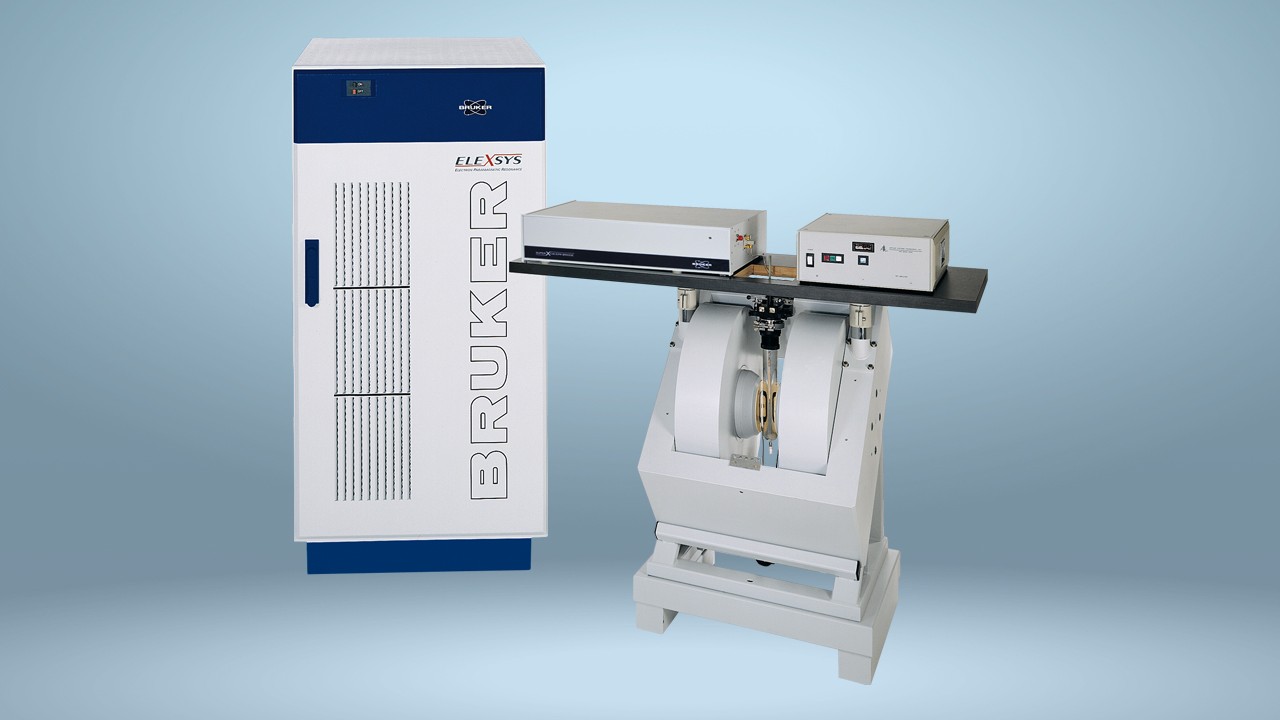Contrast Agent Mn-NOTA Enhances Dynamic Nuclear Polarization
…electron T1 reduction of the polarizing agent by a paramagnetic additive is an essential requirement for the improvement seen in solid-state 13C DNP signal.
Dynamic nuclear polarization (DNP)1 has become a valuable tool for enhancing nuclear magnetic resonance (NMR) signals. The transfer of spin polarization from highly polarized electrons to the nuclei of the sample to improve their nuclear spin can increase the NMR signal by several orders of magnitude2.
It is desirable to increase the sensitivity of NMR if the sample to be studied has nuclei with a low natural abundance, such as 13C. NMR sensitivity can be improved by using a larger sample, increasing the scan duration or using a higher magnetic field. However, it is preferable to use a more precise method, such as DNP. The technique has proved especially valuable for 13C metabolic imaging3,4.
NMR spectroscopy is a highly desirable and useful analytical tool in both research and industry. It provides tremendous detail on the structure, dynamics, reaction state, and chemical environment of molecules. Furthermore, it can be used to either simultaneously identify and quantify the constituents of an unknown sample or to specifically detect the amount of a particular species present. In addition, NMR does not damage the sample and so multiple measurements can be taken over time in living tissue.
As the applications of NMR become increasingly complex, the requirement to further increase the sensitivity of the technique also rises. Consequently, there has been much research into determining the optimal polarization procedure for maximizing the enhancement in NMR signal.
Nitroxides and trityls are most commonly used as the polarizing agent that provides the free electrons as their electron paramagnetic resonance (EPR) spectra makes them particularly well suited to polarizing 1H and 13C, respectively, which are popular NMR target nuclei. In order to achieve even greater NMR signal enhancement, these polarizing agents have been doped with paramagnetic compounds and metal ions, such as gadolinium, manganese, and copper. Such doping is thought to effectively enhance trityl 13CDNP through the reduction of electron T1 of the polarizing agent5.
For the first time, paramagnetic transition metal complexes have recently been studied for efficiency as doping agents to enhance 13C DNP6. The polarizing agent, trityl OX063, was used to obtain NMR spectra of 13C sodium acetate in its pure state and doped with one of three paramagnetic transition metal complexes (Mn-NOTA, Cu-NOTA or Co-NOTA). Each solution was evaluated by EPR at the National High Magnetic Field Laboratory using a Bruker E680 EPR spectrometer with a TE011 cylindrical cavity.
Doping with Mn-NOTA was found to provide a three-fold increase in solid-state 13C DNP signal6. However, no such enhancement of solid-state 13C DNP EPR signals was observed with either Cu-NOTA or Co-NOTA.
Further evaluation of the trityl OX063 polarizing agent using W-band EPR revealed that the electron T1 was significantly reduced in the samples doped with Mn2+. Despite their paramagnetic nature, the electron T1 was not reduced in the samples doped with either Cu2+ or Co2+.
This latest research demonstrated that not all paramagnetic additives are beneficial in the enhancement of DNP. In addition, it provided the first direct evidence that electron T1 reduction of the polarizing agent is an essential requirement for enhancing solid-state 13C DNP signal.
References
- Abragam A, Goldman M. Rep. Prog. Phys. 1978; 41:395–467.
- Ardenkjaer-Larsen JH. J. Magn. Reson. 2016; 264:3–12.
- Gallagher FA, et al. Prog. Nucl. Magn. Reson. Spectrosc. 2009; 55:285–295.
- Nelson SJ, et al. Sci. Transl Med. 2013;5:198ra108.
- Niedbalski P, et al. J. Chem. Phys. 2017;146:014303.
- Niedbalski P, et al. J Phys Chem. A. 2017;121(48):9221–9228.


